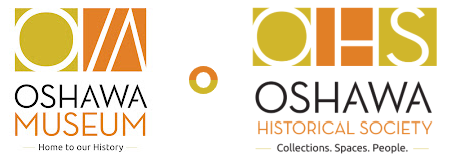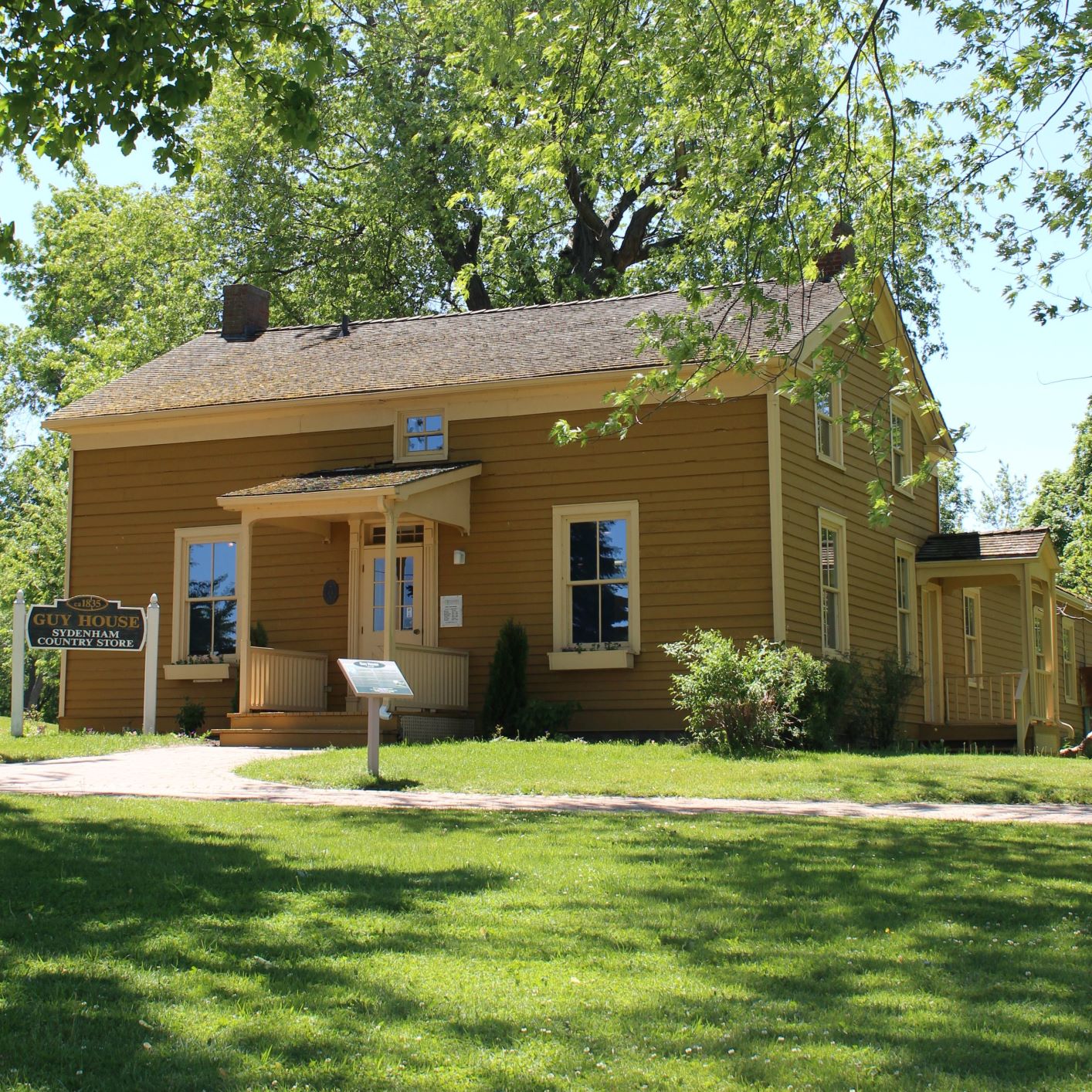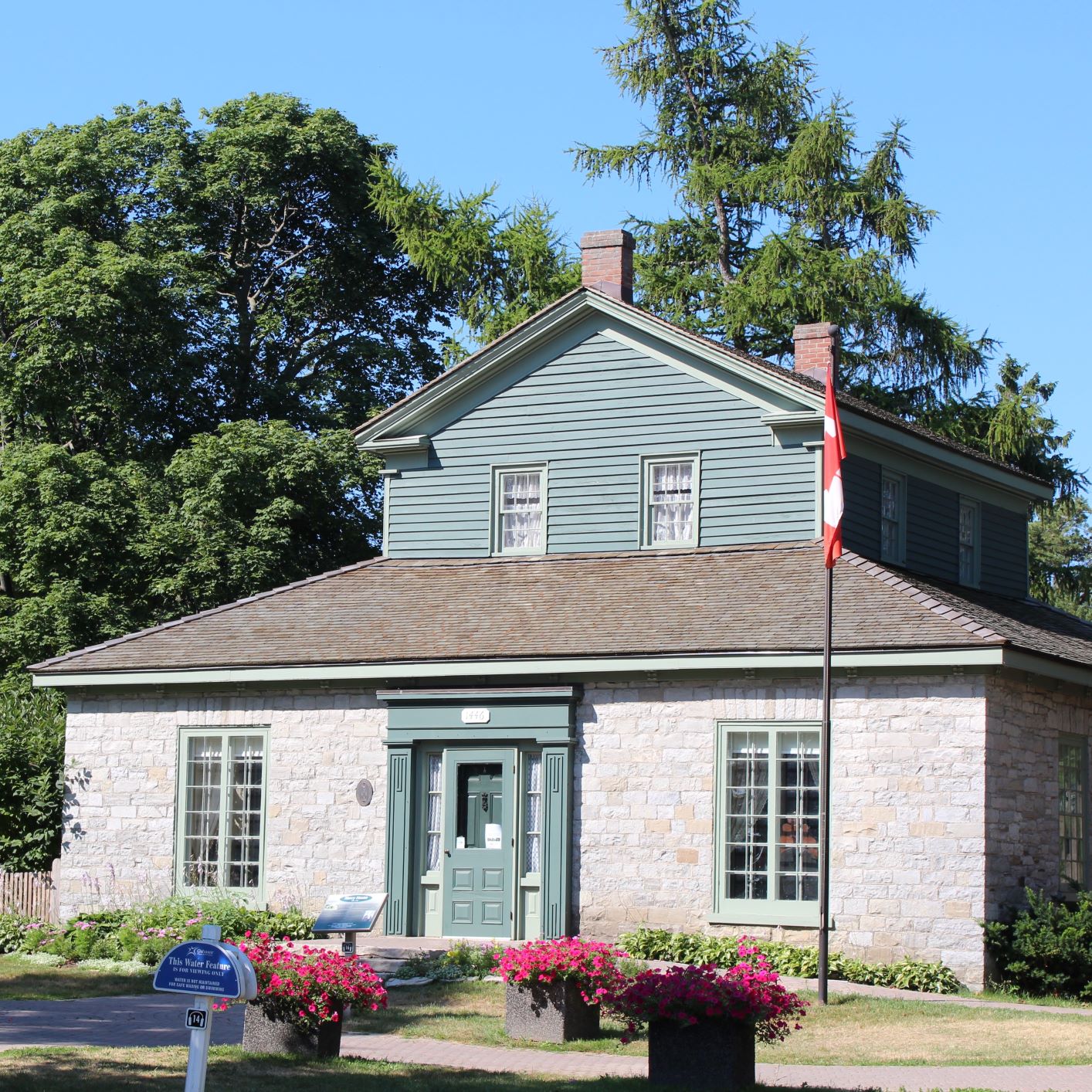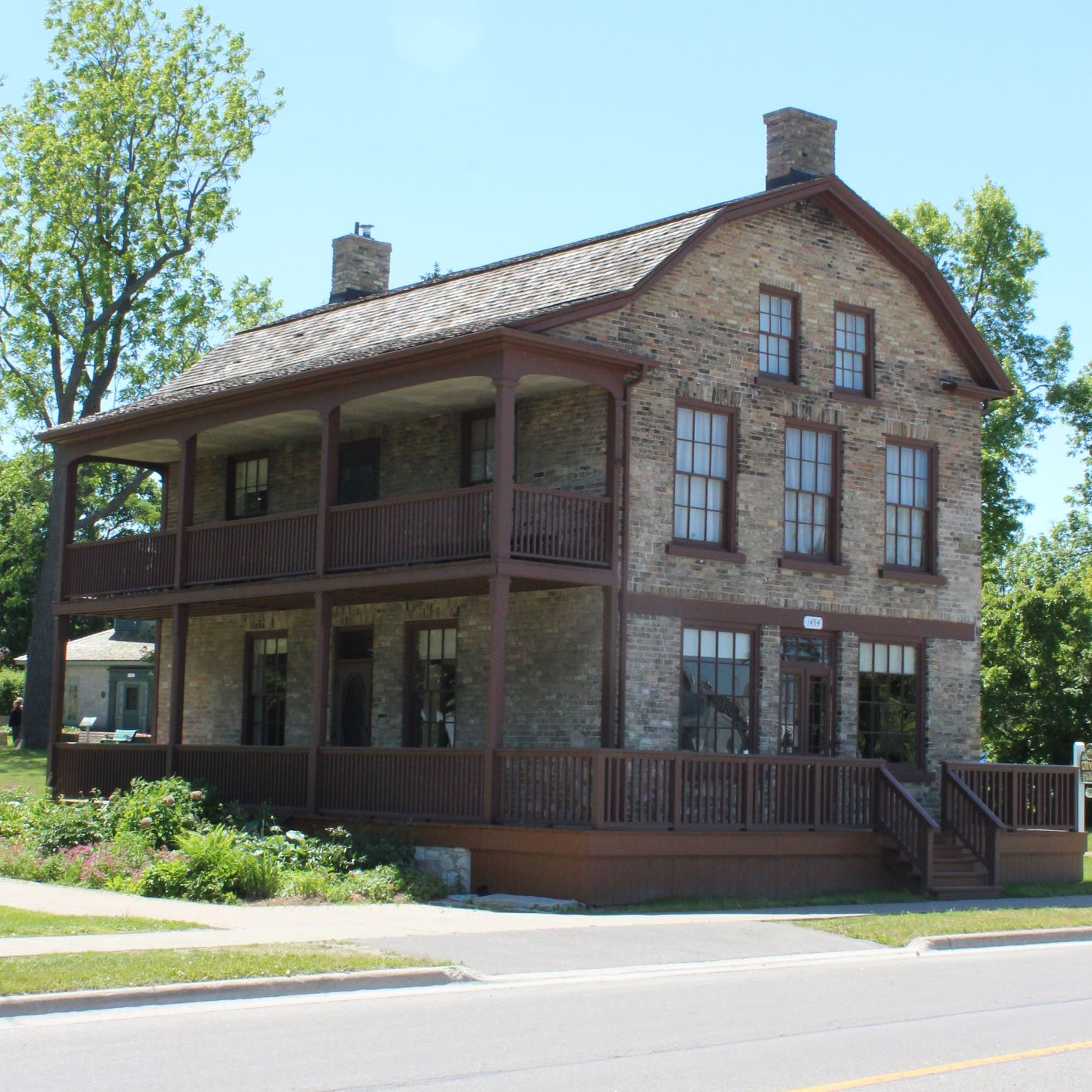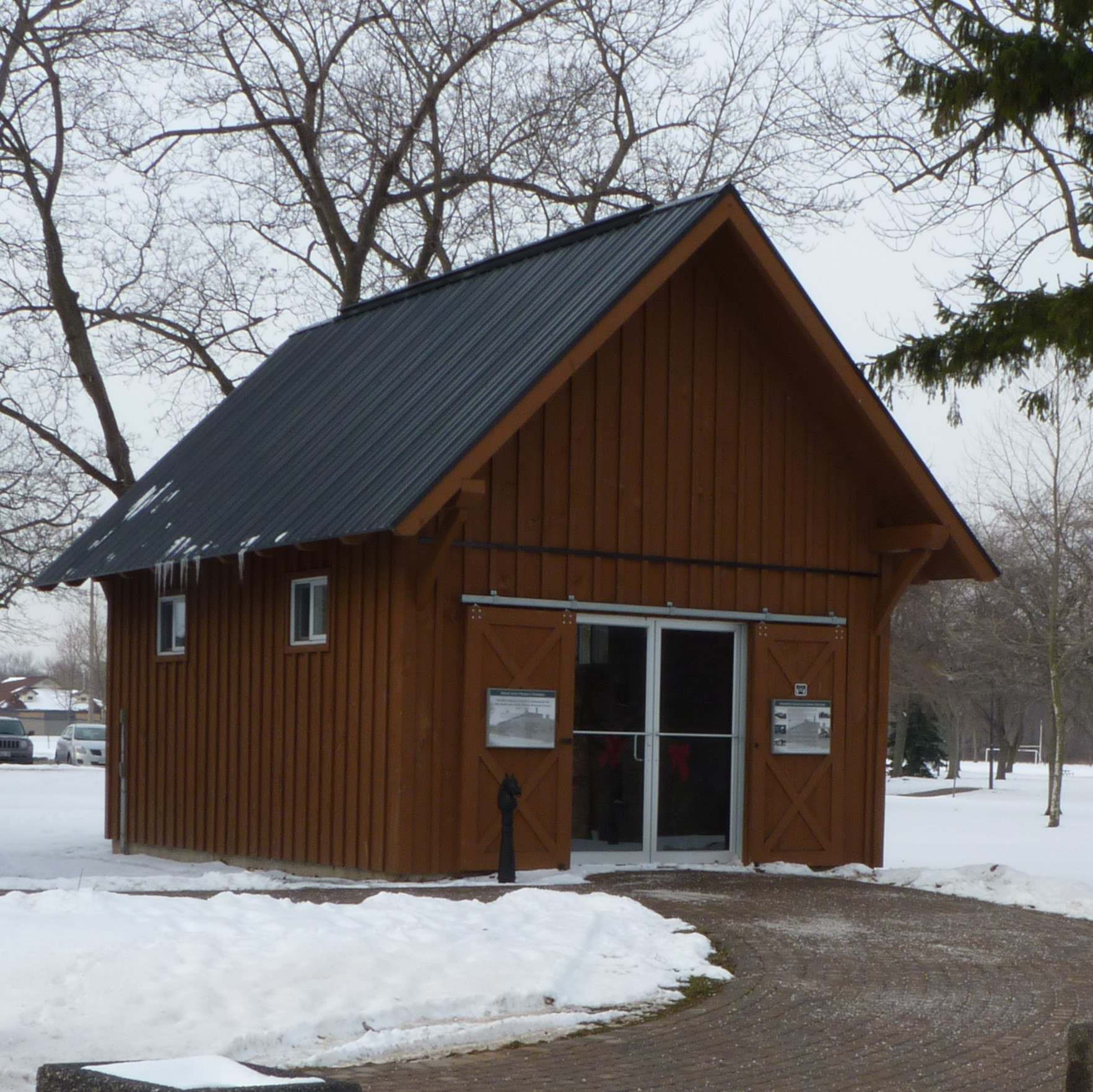Plan Your Visit

The Oshawa Museum offers tours year round!
Start your visit at Guy House (Yellow Building)
| |
If you have questions before your visit, please call 905-436-7624 x 106 or send an email to the programming department ( programming@oshawamuseum.org)
programming@oshawamuseum.org)
The Museum Buildings
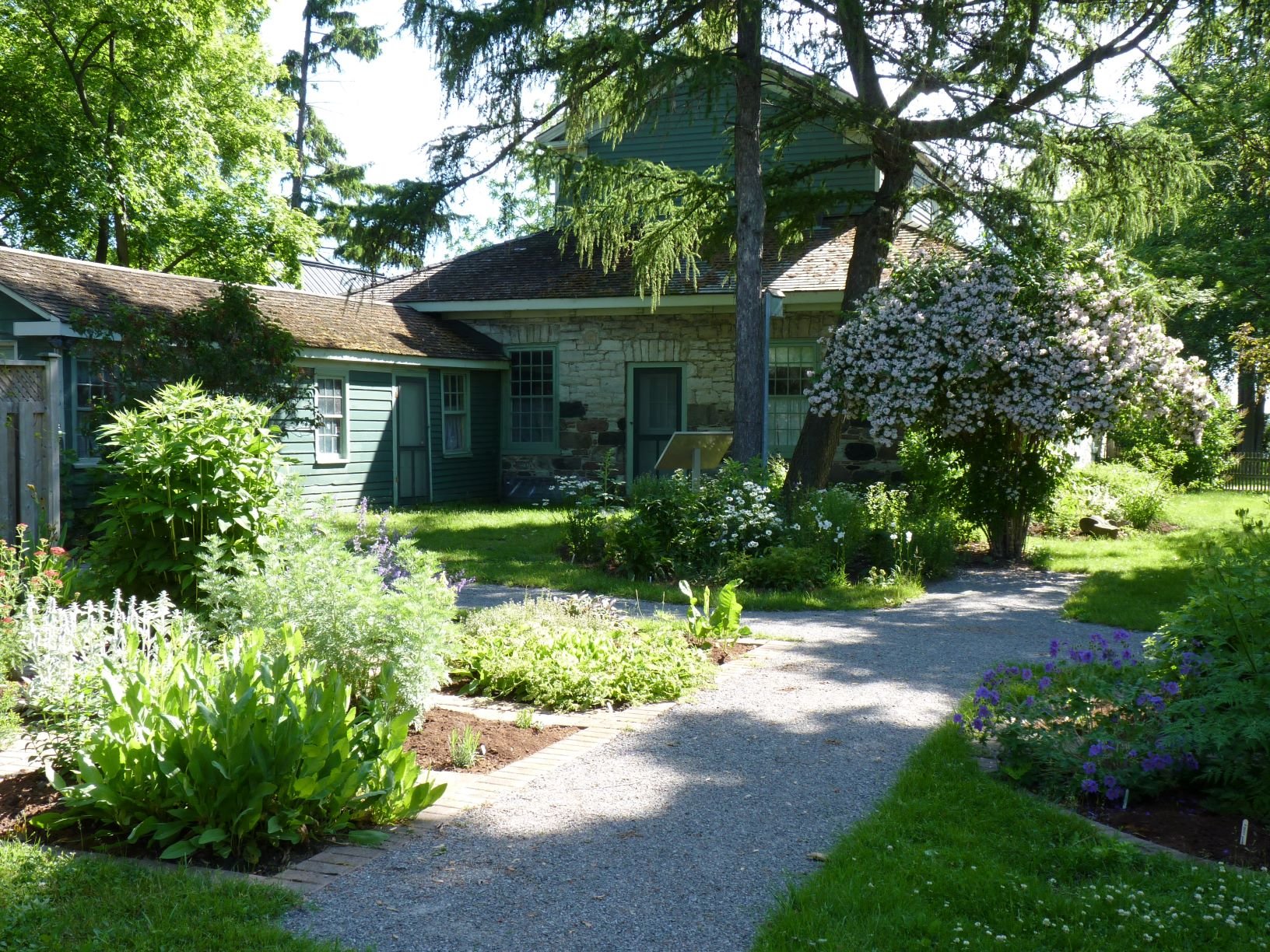
The Henry House Heritage Gardens
The Heritage Gardens behind Henry House feature various perennial herbal plots, including culinary, medicinal, tea and dye herbs. The garden space is interpreted as the family's garden, illustrating how the herbs would have been used and why. The Heritage Gardens feature two designated heritage trees, recognized by Trees Ontario, a fleur-de-lis from the Centre Street United Church, dated 1874, and a garden brick donor walkway.
The gardens are used for programming throughout the summer, including the popular Yoga in the Garden.
What's in the Robinson House Galleries
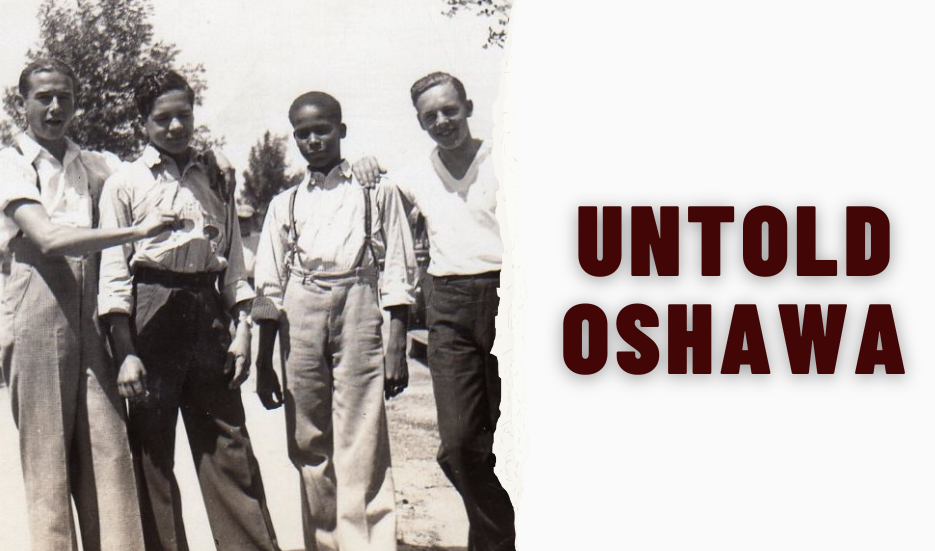
Untold Oshawa
Untold Oshawa highlights stories that have not been included in previous published history books and works. The aim is to expand the commonly accepted narrative of Oshawa’s history, to develop a local history that includes different points of view, and to examine different aspects of our community’s past.
This exhibit is a starting point of a more inclusive story. Here, you will find stories of some of Oshawa’s early Black settlers, a look into the impact of labour unions in Oshawa, and a focus on the experiences of women and children.
